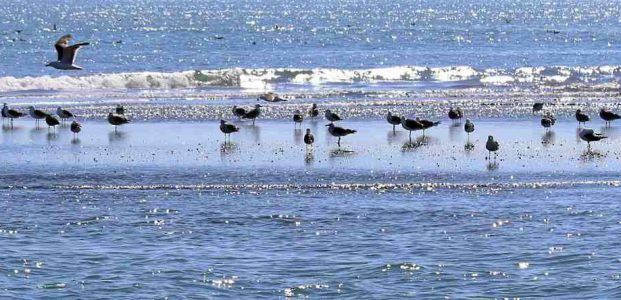Koitiata
… a get away from it all sort of place at the beach.

Koitiata is located on the west coast of New Zealand’s North Island, adjacent to Turakina Beach and the mouth of the Turakina River, 33kms south of Wanganui, 60kms west of Palmerston North. The village was established in 1917 as a “sea-side resort”, and over the last one hundred plus years it has developed into a quiet coastal village.
Koitiata is one of those increasingly rare small seaside villages where you can live in an uncorrupted and unspoiled part of New Zealand. The population is a mix of people, all seeking to live out their rendering of a “being away from it all at the beach” lifestyle, and while it remains a small nondescript place at the beach, it is struggling to stay that way. About half of the village’s 117 houses are lived in by one hundred or so permanent residents. The balance of the properties are holiday homes, for people from all over the lower half of the North Island, and some even further afield.
The community’s playground is the adjacent and ever-changing long black sandy Turakina Beach. Whether fishing, white baiting, gathering firewood, walking, or just sitting and talking or gazing out to sea, the lives of the Koitiata residents revolve around the beach. It’s their backyard, they live in a special place … at the beach. It’s the way those living out here on the edge like it, and it is also a place where visitors are made more than welcome.
Beach

Turakina Beach begins at the northern end of the Rangitikei coast, adjacent to Koitiata. Beginning on the southern bank of the Turakina River’s most northern mouth position, it extends south towards the Rangitikei River, 28 Kms away.
First time visitors are always fascinated by the vast quantities of driftwood that cover the beach. The driftwood, which sometimes makes passage down the beach difficult, is deposited by a combination of big seas and high rivers. It is buried by the moving sands and then uncovered again, sometimes years later, by the sea or by the relocation of the Turakina River and its mouth.
The beach is a typical west coast black iron sand beach and nature dictates that it is an ever-changing landscape. Strong onshore winds, high tides, crashing surf and the moving river mouth continuously relocate the black sand of the beach and the dunes. A firm surface today can be a soft sand trap tomorrow.
This constant change makes it challenging for mere mortals. Whether travelling on the beach, looking for a suitable boat launch location, or looking for that bountiful fishing spot, the beach must be treated with respect. Waiting for the tide to go back out while the saltwater ruins your stuck vehicle’s upholstery and electrics gets you focused on what ‘respect-for-the-beach’ means.
River

The Turakina River flows southwestward from its inland source south of Waiouru and reaches the sea 140 Kms later adjacent to Koitiata. While being a provider to the residents of Koitiata and visitors, the ever-moving mouth of the river can be disruptive and play havoc with the beach and adjacent environment.
When the river floods, it often means that Beach Road access between the village and the highway is cut, sometime for days at a time. And when the flooding coincides with high tides the encroachment of flood water into the playground / camping ground area of the village can be a result.
While flooding episodes are rare, the relocation of the river mouth up and down the beach is perpetual. The river mouth location ranges over 4.5 Kms of Turakina Beach, between points which are 1.5 Km north and 3.0 Kms south of Koitiata. So, there is no guarantee that your fishing or white baiting spot will be accessible or even exist in the future.
The sand dunes and beach are also subject to the river’s moods and the resulting transformations provide a constant source of interest and challenge to Koitiata’s residents. They have learned to cope with the changes to the beach caused by the river and its mouth relocation.
Lagoon

When the river again moved its mouth to the north of the village, in July 1998, the old riverbed area became closed off at each end, resulting in a 4km freshwater lagoon. The river mouth continues to relocate itself up and down the beach, and although it sometimes creates a side stream into the beach and old riverbed area, it has always stayed on the seaward side of the dunes and beach.
The lagoon has continued to remain separated from the river and now it is freshwater runoff from inland that dictates the depth of water. Increased rainfall periods have recently resulted in the lagoon encroaching into the campground area. That situation regularly occurred when the river previously flowed where the lagoon is currently located. A combination of big seas and high tides can sometimes result in the lagoon being topped-up with sea water flowing across the beach.
Although the water level decreases over the summer months there is always enough water to make it an attractive haven for numerous species of water birds throughout the year. Over recent years the lagoon has become divided by a substantial wind driven build-up of sand which now provides dry beach access for most of the year.

